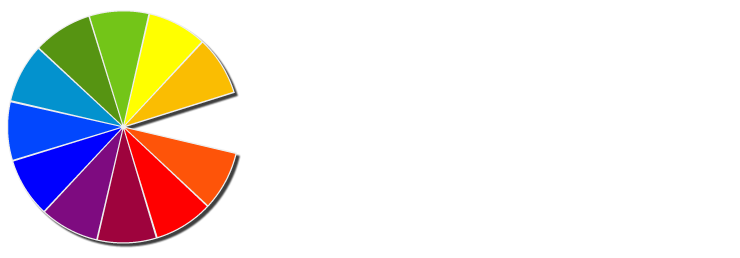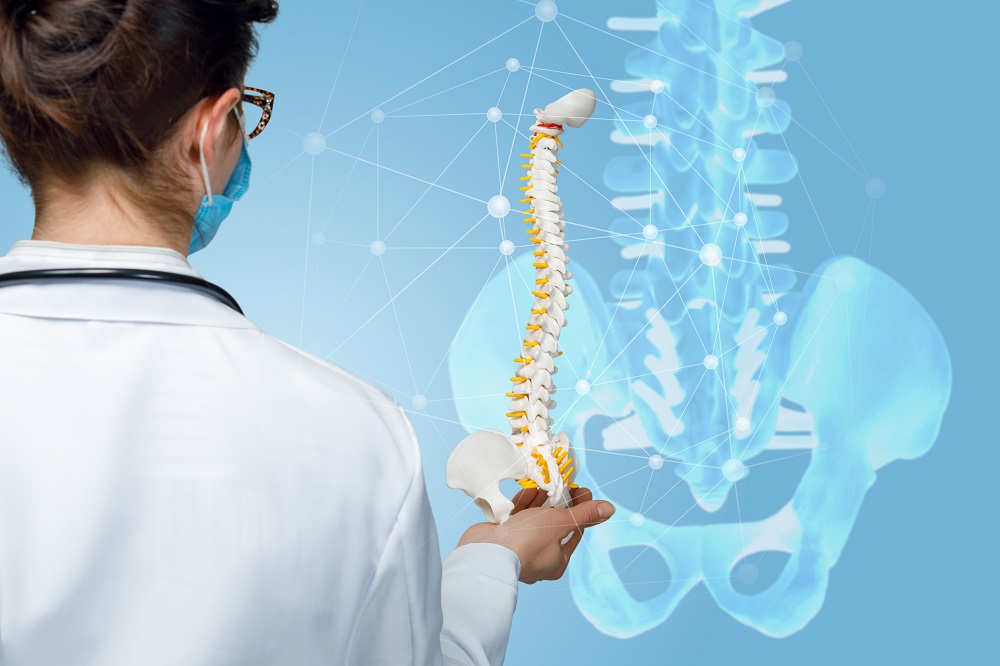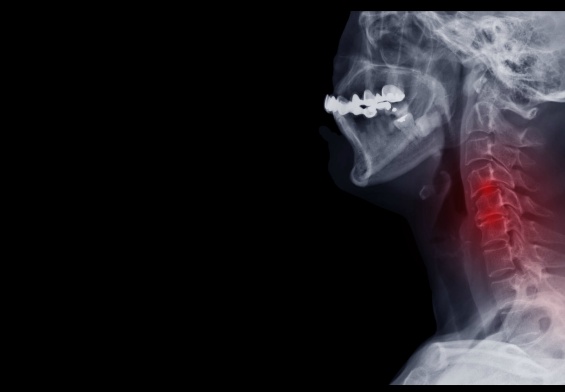Lower back pain is one of life’s greatest inevitabilities. Everyone experiences it at some point or another, and such a huge sample size leads many people to wonder “Should I see a spine doctor in NJ for lower left back pain?”
This question often comes up when the discomfort lingers, or when it starts interfering with everyday movement. Symptoms like those should sound the alarm. Don’t ignore them, especially if they’re getting worse over time.
It could point to nerve compression or disc problems. In some cases, it might even indicate issues with your kidneys or joints. One-sided symptoms are especially concerning when they’re persistent or spreading.
Spine doctors in New Jersey are trained to spot warning patterns. These patterns can signal something beyond the veil of typical muscle soreness.
A timely diagnosis offers several benefits. It can prevent complications, help reduce pain faster and protect your long-term mobility. If your pain feels different from usual soreness, it’s worth getting checked out.
What Can Cause Pain in the Lower Left Side of the Back?
Pain on the lower left side of the back can stem from several different sources. The area houses your spine, muscles, nerves, and joints. Nearby organs also share this region of the body. That’s why comprehensive evaluations are often needed to get to the bottom of your issues.
Common causes include:
- Muscle strain Overstretching or overuse of the lower back muscles can cause problems. This often happens during lifting or twisting movements. The result is localized inflammation, stiffness, or soreness on the left side.
- Herniated or bulging disc A disc that slips out of place creates pressure on nerves. This causes sharp, localized pain. The discomfort may also radiate into the left hip, buttock, or leg.
- Sciatica This condition involves compression or irritation of the left-sided sciatic nerve. It causes burning, shooting, or radiating pain. The pain typically travels from the lower back down the leg.
- Sacroiliac (SI) joint dysfunction The SI joint sits near the base of the spine. When it becomes inflamed or unstable, it can trigger pain on one side of the lower back.
- Kidney stones or infection Sometimes the kidneys are the real problem. When pain radiates to the back along with fever, nausea, or urinary changes, the kidneys may be involved. These cases often need urgent care.
- Endometriosis or ovarian conditions In females, pelvic disorders can create referred pain. Conditions like endometriosis or ovarian cysts may produce pain in the lower left back. This is especially common during menstruation.
- Diverticulitis or bowel inflammation Inflammation of the lower colon can affect your back. For example, diverticulitis may create deep, aching pain. This pain appears on the lower left side of both the back and abdomen.
Embarking on the journey toward relief requires knowing the source of your pain. Some causes are mild, and just need rest to improve. Others may signal a deeper issue that requires medical evaluation from a spine doctor in NJ.
When Lower Left Back Pain Is a Red Flag
Most lower back pain improves with time and/or rest. Gentle movement can help, too.
Some cases, though, come with warning signs. These suggest something more serious and are known as red flags. Prompt medical attention is usually required for these.
Red flag symptoms include:
- Pain that doesn’t improve If your pain lasts for more than a few weeks despite home treatment, take notice. This could signal a deeper issue needing further evaluation.
- Pain that wakes you from sleep Discomfort that gets worse at night is concerning. Pain that disrupts sleep may suggest an inflammatory or structural condition affecting the spine.
- Numbness or tingling in the leg or groin Sensory changes may point to nerve compression or irritation. This is especially true if the symptoms are one-sided and progressing.
- Weakness in the legs Difficulty walking, stumbling, or dragging a foot could indicate nerve involvement. These symptoms need urgent testing.
- Loss of bladder or bowel control Sudden incontinence along with back pain is serious. This may be a sign of cauda equina syndrome. It’s a rare but serious spinal emergency.
- Fever or unexplained weight loss When back pain is paired with fever, chills, or weight loss, it raises concern. This combination may indicate infection or other systemic illness.
- History of cancer or recent trauma Individuals with a cancer history need special attention. The same goes for those who’ve suffered a fall or accident. They should be evaluated for possible fractures or metastasis.
Red flags don’t confirm a specific diagnosis. Instead, they help doctors decide when someone needs imaging or specialist referral.
If your back pain includes any of these symptoms, don’t wait. Contact a spine doctor in NJ as soon as possible.
How Spine Doctors in NJ Diagnose Lower Left Back Pain
Getting the right diagnosis is an important piece of the relief puzzle. But that takes a structured process that starts with your symptoms and ends with a precise treatment plan based on what’s causing the pain.
Here’s how the diagnostic process usually unfolds:
- Reviewing your medical history Your doctor begins by asking when the pain started. They’ll want to know what it feels like and whether it’s affecting sleep, movement, or daily tasks. Past injuries, surgeries, or health conditions may offer clues. These details help point toward the source of the pain.
- Conducting a physical and neurological exam The spine doctor checks your posture, flexibility, and movement. They’ll also test reflexes, sensation, and strength. This helps detect signs of nerve compression or muscle imbalance. These problems may not show up on imaging alone.
- Ordering X-rays X-rays provide a clear view of the bones in your spine. They help rule out fractures, arthritis, and spinal misalignment. This is especially important after trauma or in older adults.
- Scheduling an MRI or CT scan If your spine doctor suspects soft tissue or nerve issues, it needs more detailed imaging. MRI or CT scans can reveal herniated discs, spinal stenosis, or tumors. These tests are critical for identifying structural problems. They show issues that don’t appear on X-rays.
- Running lab tests (if needed) They may order certain lab tests, like blood or urine, in certain cases. This happens when your doctor thinks infection, kidney issues, or inflammatory conditions are at play. These tests also help rule out systemic causes of pain and provide a more complete picture of your health.
- Performing nerve function tests (EMG/NCS) Electromyography (EMG) and nerve conduction studies (NCS) measure how well nerves and muscles are working. These tests confirm the presence and location of nerve irritation or damage. Each of these steps plays a specific role. Together, they help narrow down the cause of your pain.
A spine doctor in NJ will guide you through this process. They use both clinical expertise and diagnostic tools to identify the best path forward.
Treatment Options for Lower Left Back Pain
Once they’ve solved the puzzle, your doctor will recommend a treatment plan tailored to your specific condition.
Many people find relief with conservative care. Others may enjoy targeted interventions guided by a spine specialist.
Here’s how treatment usually progresses:
- Short-term activity modification You may be advised to temporarily avoid certain activities. This includes heavy lifting, bending, or high-impact exercise. The goal is to allow irritated muscles or joints to recover.
- Medications to manage inflammation Over-the-counter NSAIDs like ibuprofen are often the first step. These help reduce swelling and discomfort. In some cases, prescription medications may be needed.
- Physical therapy A physical therapist can guide you through specific exercises. These include stretches and strengthening movements. The goal is to improve spinal support, flexibility, and long-term mobility.
- Heat and cold therapy Ice can reduce inflammation in the early stages. Heat improves blood flow and eases stiffness. This works best once swelling has decreased.
- Chiropractic care or manual therapy For some types of musculoskeletal pain, hands-on treatment helps. Spinal adjustments or soft tissue work may relieve tension. They can also improve range of motion.
- Steroid injections or nerve blocks When inflammation affects nerve roots or joints, targeted injections can help. These treatments reduce pain and improve function. They also involve minimal downtime.
- Minimally invasive surgery (when needed) If conservative treatments fail, surgical options may be considered. Procedures such as discectomy or spinal decompression can relieve pressure on nerves. If your diagnosis involves multilevel spondylosis, here’s what to know about when spine surgery becomes necessary.
Most people with lower left back pain improve without surgery. Early treatment accelerates recovery, and reduces the chances of long-term complications.
A spine doctor in NJ will help guide you through each phase. They’ll base treatment decisions on your individual progress.
Learn more about how providers treat pain in the lower left side of the back, including newer techniques and when to seek hands-on care.
How to Choose the Right Spine Doctor in NJ
Finding the right spine doctor is just as important as getting the right diagnosis. Not every provider has the same level of experience with complex back pain.
So, it helps to know what to look for before scheduling a visit.
Start by checking credentials. Board certification in orthopedic spine surgery, neurosurgery, or physical medicine and rehabilitation (PM&R) is important. This ensures your doctor has specialized training in spine care.
Many NJ practices also include a team of providers. These professionals focus only on spinal conditions.
Experience matters, especially when it comes to complex cases. This includes diagnosing and treating nerve-related pain, disc problems, or structural imbalances.
A provider who regularly handles left-sided lower back pain will be more familiar with the condition. They’ll know how to differentiate similar problems.
Accessibility is another factor to consider. Look for a practice that offers in-house imaging and timely appointments. Coordinated physical therapy is also valuable.
This approach can streamline your care. It also reduces the number of outside referrals you’ll need.
Finally, consider how the doctor communicates. You want someone who listens and explains options clearly. They should work with you to create a personalized treatment plan.
Avoid providers who use a one-size-fits-all approach.
When to See a Spine Doctor in NJ for Lower Left Back Pain
It’s time to see a spine doctor if your lower left back pain lasts more than a few weeks. You should also seek help if pain interferes with daily activities or keeps returning.
Home care support can also make a big difference for seniors dealing with chronic back issues.
Ongoing pain is your body’s way of asking for help. Something deeper could be going on if it’s happening to you.
You should also seek help right away if certain symptoms appear. These include pain paired with numbness, weakness, or changes in bladder or bowel function.
These symptoms may point to nerve compression. They could also indicate other serious spine conditions that need urgent attention.
Even if your symptoms seem minor, a spine doctor in NJ can help. They can identify the cause and prevent future complications.
Early diagnosis leads to more targeted treatment. Most importantly, it means a faster return to normal life.
Resources
Ferdinandov D, Yankov D and Trandzhiev M (2024) Common differential diagnosis of low back pain in contemporary medical practice: a narrative review. Front. Med. 11:1366514. doi: 10.3389/fmed.2024.1366514
https://www.healthquality.va.gov/guidelines/Pain/lbp/VADoDLBPCPGFinal508.pdf
https://www.niams.nih.gov/health-topics/back-pain
Storari L, Piai J, Zitti M, Raffaele G, Fiorentino F, Paciotti R, Garzonio F, Ganassin G, Dunning J, Rossettini G, et al. Standardized Definition of Red Flags in Musculoskeletal Care: A Comprehensive Review of Clinical Practice Guidelines. Medicina. 2025; 61(6):1002. https://doi.org/10.3390/medicina61061002




